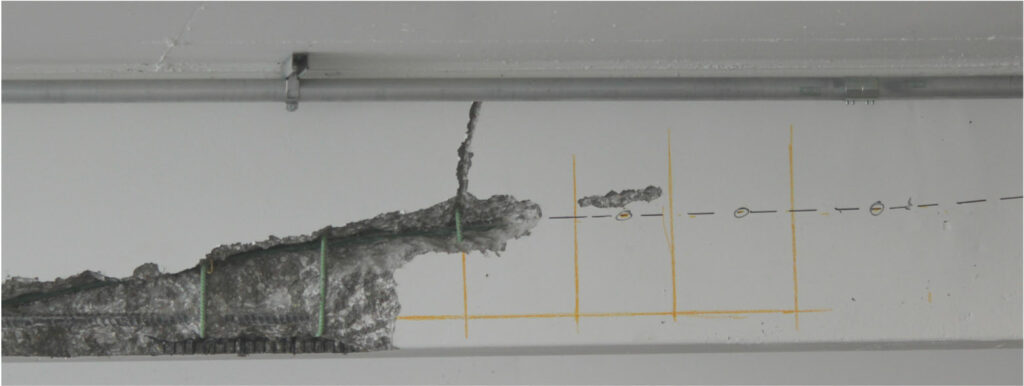Concrete Scanning: An Important Step In The Direction Of Making Certain Architectural Honesty and Safety And Security
In the realm of building and facilities maintenance, the importance of concrete scanning can not be overstated. This careful procedure holds the crucial to revealing prospective dangers concealed underneath the surface of seemingly solid structures. By employing sophisticated innovation and methods, concrete scanning serves as an essential tool in guaranteeing that the integrity and safety of bridges and buildings are promoted to the highest possible requirements. However, beyond its surface-level implications, the duty of concrete scanning prolongs far deeper than meets the eye.
Value of Concrete Scanning
Concrete scanning plays a vital role in making certain the architectural stability and safety and security of buildings and infrastructure tasks. By making use of sophisticated modern technologies such as ground-penetrating radar (GPR) and electromagnetic induction, specialists can non-destructively examine concrete structures to find potential flaws, voids, ingrained objects, and support format. This process enables very early discovery of anomalies that can jeopardize the security of a framework, avoiding pricey damages and making certain the security of owners.
Before drilling, cutting, or coring right into concrete, scanning assists recognize the specific areas of rebar, post-tension cords, and other ingrained components, reducing the threat of accidental hits that can lead to architectural weak points. Furthermore, concrete scanning aids in top quality control by verifying the thickness of concrete covers and finding any type of discrepancies that might affect the general sturdiness of the structure.
Modern Technology for Concrete Inspection

Benefits of Very Early Detection
Timely discovery of architectural problems can significantly reduce dangers and make certain the longevity of building tasks. By identifying prospective issues beforehand in the construction process, stakeholders can take aggressive measures to address issues before they rise into larger and much more expensive issues. Among the key benefits of very early discovery is the avoidance of structural failures, which can position major security dangers and cause job hold-ups and financial losses.
Moreover, early discovery enables prompt fixings and upkeep, which can assist extend the lifespan of the structure. By addressing concerns without delay, building groups can prevent costly repairs or perhaps the requirement for premature replacement of architectural parts. This positive strategy not just conserves time and money but additionally boosts the overall safety and toughness of the building project.
In addition, very early discovery can enhance project preparation and decision-making by offering stakeholders with useful insights right into the condition of the framework. Armed with this details, job managers can make informed options relating to building materials, timelines, and methods, causing a lot more efficient and successful project results.
Guaranteeing Structural Stability
Making sure the architectural stability of a building job is critical to its safety and durability. Architectural security refers to the capacity of a building or facilities to keep its type and feature under ecological conditions and various tons. To attain this, complete assessment and surveillance of the structure are necessary. Concrete scanning plays an important function in ensuring structural security by spotting prospective problems such as gaps, delamination, or reinforcement rust that can compromise the integrity of the structure gradually.
By using advanced scanning technologies like ground-penetrating radar (GPR) and electromagnetic induction, building experts can non-invasively check concrete structures to determine areas of issue beneath the surface. This positive method enables the early discovery of weaknesses or flaws, making it possible for prompt repairs or reinforcement to protect against structural failures.
Regular concrete scanning during various building stages and throughout the life process of a structure can help preserve its stability, mitigate threats, and make certain the safety of owners. By prioritizing architectural stability through content concrete scanning, building and construction projects can boost their resilience and durability, inevitably adding to better security and long life.

Stopping Vital Failings
Implementing routine evaluations, such as concrete scanning, can disclose covert problems like voids, fractures, or deterioration that index could compromise the honesty of a framework. By making use of innovative scanning modern technologies like Ground Permeating Radar (GPR) or Concrete X-ray, engineers can non-destructively analyze the condition of concrete and identify weak points that require support or repair service.

Final Thought
In final thought, concrete scanning plays an essential role in making certain architectural stability and safety and security by making use of innovative modern technology for very early discovery of potential issues. This positive method helps avoid critical failures and makes certain the security of frameworks. It is necessary to prioritize concrete inspection as a conventional method to safeguard the longevity and safety of buildings and infrastructure.
Concrete scanning plays a crucial role in ensuring the architectural honesty and security of buildings and infrastructure tasks. Furthermore, concrete scanning aids in high quality control by verifying the density of concrete covers and identifying any kind of inconsistencies this post that might impact the overall durability of the framework. Concrete scanning plays a vital function in making certain architectural stability by detecting possible issues such as gaps, delamination, or reinforcement deterioration that might compromise the stability of the structure over time.

In final thought, concrete scanning plays an essential duty in ensuring architectural honesty and safety and security by making use of advanced technology for very early discovery of possible problems.